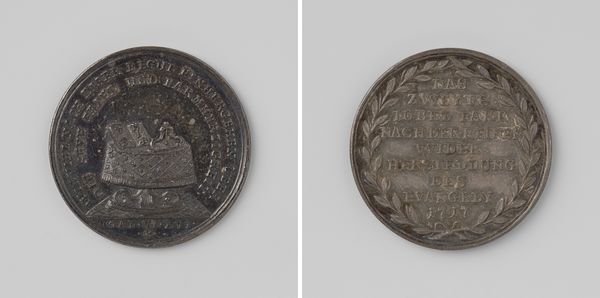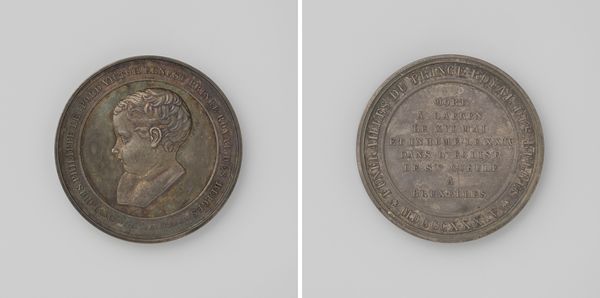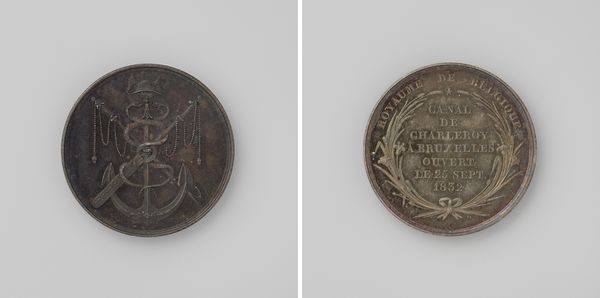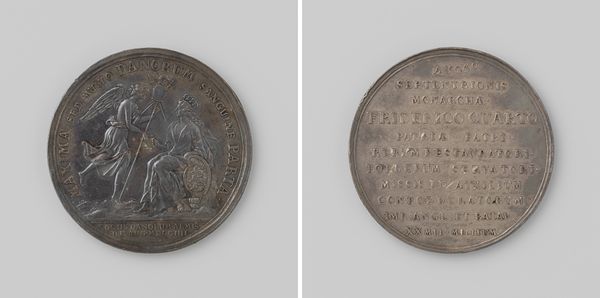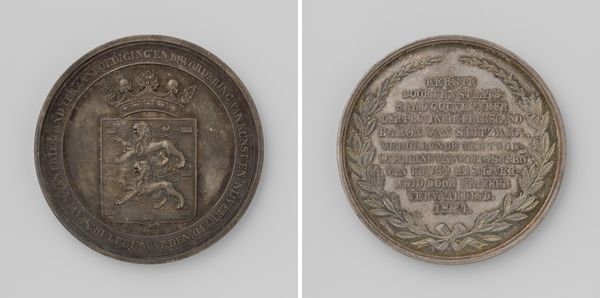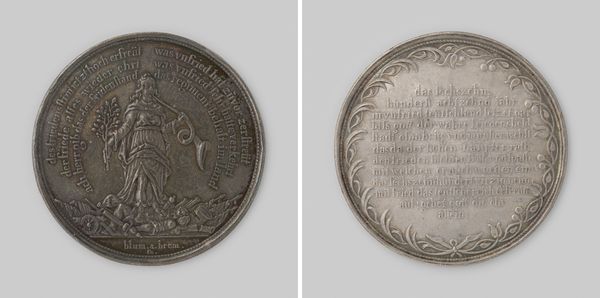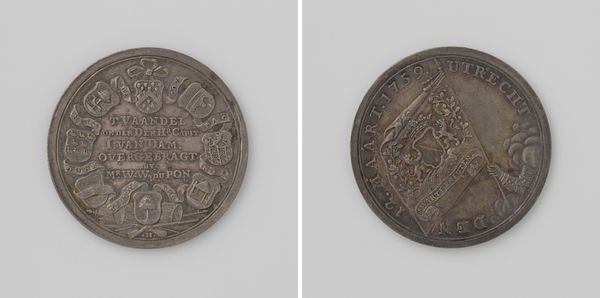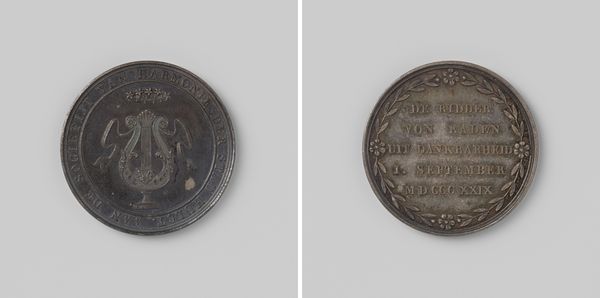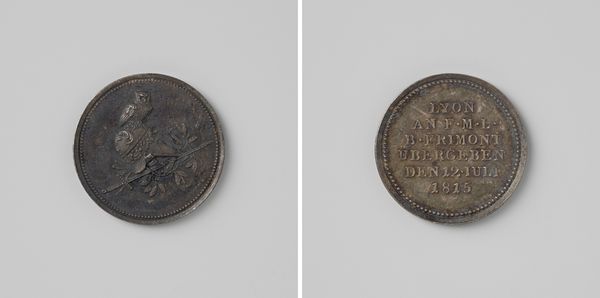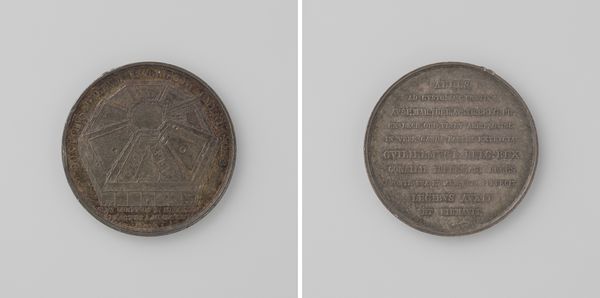
Dimensions: diameter 4.2 cm, weight 26.84 gr
Copyright: Rijks Museum: Open Domain
Curator: Here we have an intriguing object, a German communion token crafted sometime between 1750 and 1850. It appears to be metal, possibly silver, featuring relief and engraving on both sides. Editor: My initial impression is somber. The muted metallic tones and the somewhat rigid figure evoke a sense of religious austerity, but also suggest the tangible weight of faith and community belonging, especially conveyed through that weighty metal. Curator: Absolutely. From a material perspective, consider the significance of the metal itself. Such tokens were usually made from base metals for wide distribution and accessibility or the tokens in question where for specific higher status use. What does that tell us about this objects social status or symbolic meaning within its original context, I wonder? Editor: The iconography certainly invites layers of interpretation. The female figure on one side looks classical, almost Greco-Roman, with flowing drapery, and classical design that is then combined with biblical inscription that is german, while the inscription on the opposite side uses more baroque imagery. How might that combination of design impact how we view the social conditions where religion played an important part of your life? Curator: I find it fascinating how the design points toward material status while providing context for how it was perceived at the time of its construction and usage. It makes one curious about the manufacturing process for each side. I can help but think about the amount of human labor involved and the cost. Editor: And isn't the wreath motif, and those German inscriptions, fascinating? It’s a layered visual language which, no doubt, conveyed specific theological concepts for that era, while it combines the idea of both earthly wealth and spirituality through combined baroque design and engraved biblical quotations. Curator: Reflecting on its creation, the token served not just as currency or an identity badge. It was a tangible intersection of faith, societal structures, and material realities of the time. It offers a direct link to a time of the communities religious practice and to the person involved. Editor: Precisely. For me, it acts as a portal to past beliefs, values, and a cultural dialogue across centuries, which ultimately questions the interplay of wealth, material objects, and religious beliefs in early German life. It allows one to meditate on the past with all the intricacies in between.
Comments
No comments
Be the first to comment and join the conversation on the ultimate creative platform.
